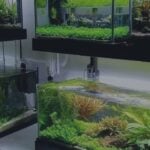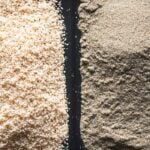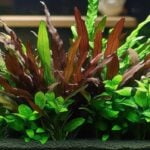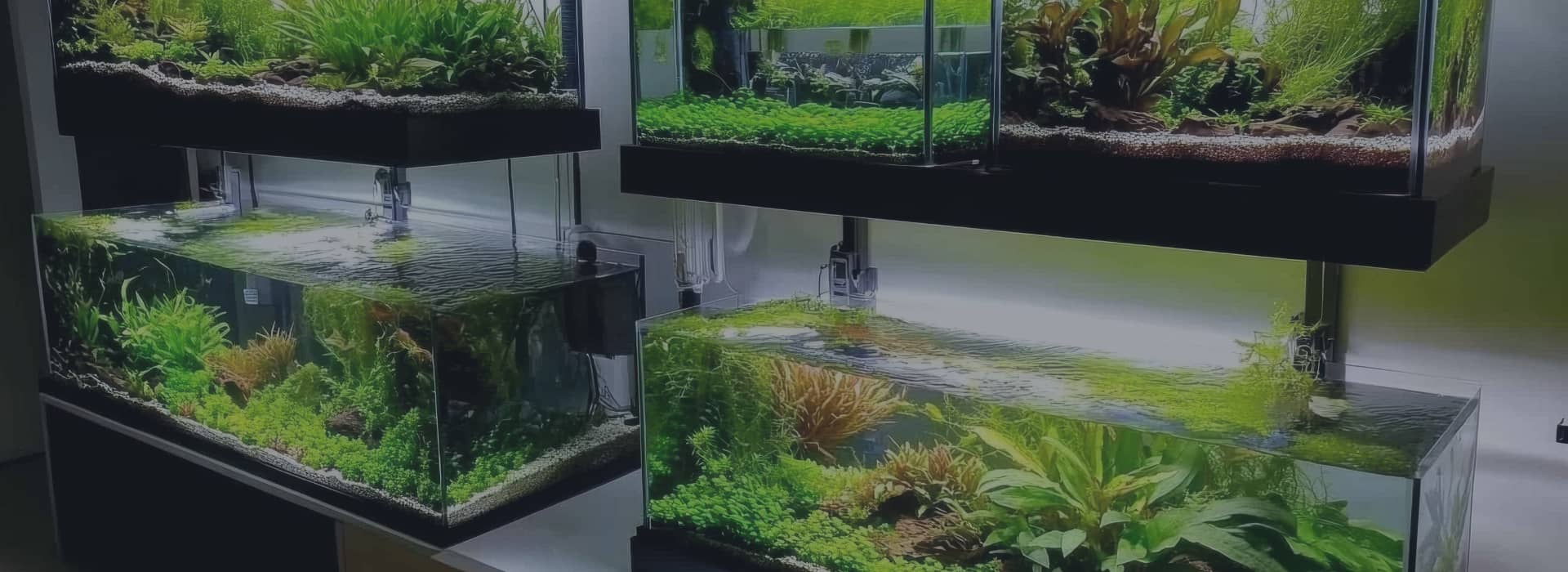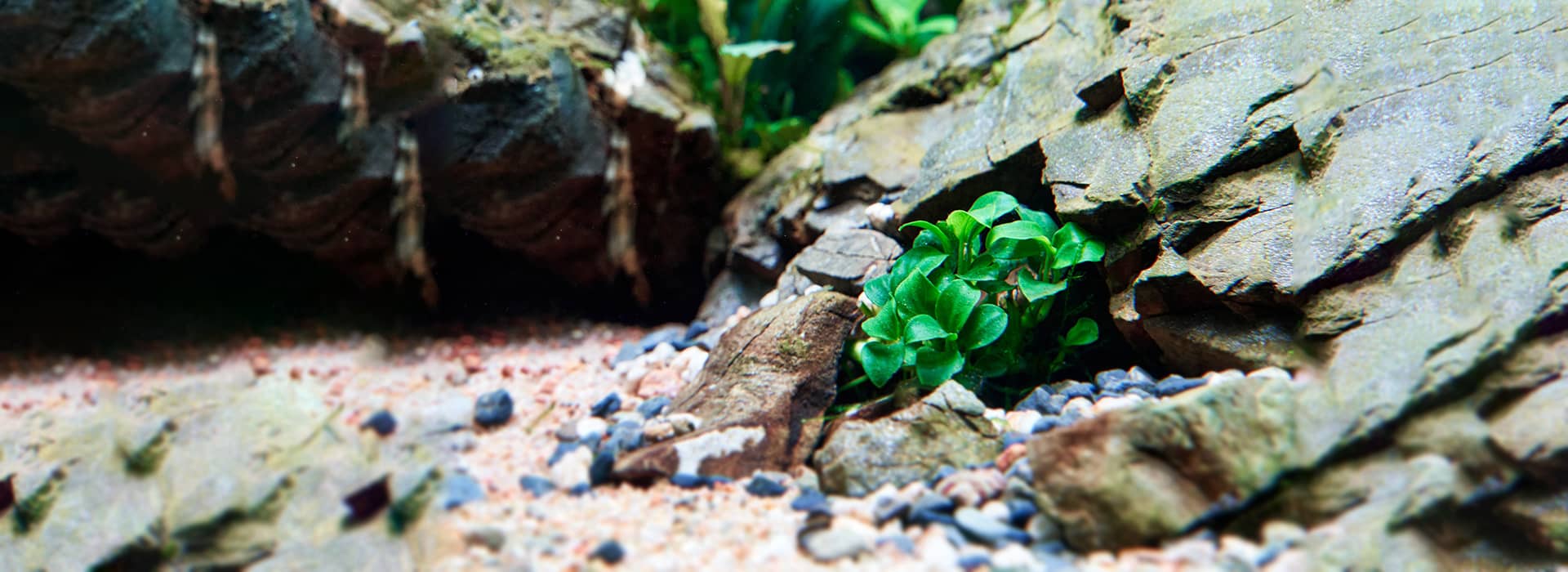The most effective advice that helps achieve success in anything is to get the fundamentals right. When it comes to planted aquariums, there is nothing more fundamental than the substrate. Creating a lush and vibrant planted aquarium requires more than just beautiful plants and fish. The foundation of a successful planted tank lies in choosing the right substrate. The substrate serves as the bed for plants to anchor their roots, access nutrients, and grow robustly. It plays a vital role in plant health, nutrient cycling, and overall aesthetics of the aquarium.
In this comprehensive guide, we will delve into the world of substrates for planted aquariums. We will explore different types of substrates, their characteristics, and how they can benefit your aquatic plants.
By understanding the importance of substrates and their impact on plant growth, you will be equipped with the knowledge to create an optimal environment for your aquatic plants to flourish. So, let’s dive in and discover the world of substrates, unlocking the secrets to a breath-taking and successful planted aquarium.
Importance of Substrate in Planted Aquariums
The substrate in a planted aquarium plays a vital role in the overall health and success of aquatic plants. Here are some key points highlighting the importance of substrate:
- Nutrient Absorption: The substrate serves as a reservoir for essential nutrients that plants need to thrive. It provides a medium for nutrient absorption through the roots, ensuring that plants have access to the necessary elements for growth, such as nitrogen, phosphorus, potassium, and micronutrients.
- Root Anchoring: A well-chosen substrate provides a stable anchor for plant roots. It allows plants to establish a strong foothold, preventing them from being uprooted by water currents or the activities of tank inhabitants. This stability promotes healthy root growth, which is crucial for overall plant development.
- Oxygen and Gas Exchange: The substrate plays a role in facilitating oxygen and gas exchange within the root zone. It helps maintain a healthy oxygen supply to the roots, preventing them from becoming deprived of oxygen. Adequate oxygenation of the roots is essential for efficient nutrient uptake and prevents the formation of anaerobic conditions that can be detrimental to plant health.
- Beneficial Bacteria Habitat: The substrate provides a substrate for beneficial bacteria to colonise. These bacteria contribute to the breakdown of organic waste, converting harmful compounds such as ammonia and nitrites into less toxic forms. This biological filtration process helps maintain water quality and creates a healthier environment for plants and other tank inhabitants.
- pH Buffering: Certain substrates, such as those containing crushed coral or aragonite, can help buffer the pH of the aquarium water. This is particularly beneficial for planted tanks that house species requiring specific pH levels.
- Aesthetic Appeal: The substrate is does play a big role in how the tank looks overall. Choose something that is in line with the overall aesthetics you are going for without compromising on the other aspects we have looked so far.
Types of Substrates for Planted Aquariums
When it comes to substrates for planted aquariums, there are several options to choose from. Each type of substrate has its own unique characteristics, benefits, and considerations. Here are some common types of substrates used in planted aquariums:
- Gravel: Gravel is a popular choice for planted aquariums due to its availability, affordability, and versatility. It comes in various sizes and colours, allowing for a lot of customisation. Gravel provides good water circulation and root penetration, making it suitable for most plant species. However, it may not retain nutrients as effectively as other substrates, requiring the use of root tabs or liquid fertilisers for optimal plant growth.
- Sand: Sand is another commonly used substrate for planted tanks. It offers a finer texture that can create a sleek and natural appearance. Sand allows for easy root penetration and can help anchor plants effectively. However, it may compact over time, affecting water circulation and nutrient availability. Mixing sand with other substrates can help address this issue.
- Aquatic Soil: Aquatic soil, also known as plant substrate or planting soil, is specifically designed for planted aquariums. It is nutrient-rich and provides excellent support for plant growth. Aquatic soil promotes root development, absorbs and retains nutrients, and helps create a fertile environment for plants. However, it can cloud the water initially and may require rinsing before use. Additionally, some aquatic soils can alter the water chemistry, so choose a suitable brand based on your desired water parameters.
- Clay-based Substrates: Clay-based substrates are becoming increasingly popular in planted aquariums. They are granular substrates made from clay materials, often enriched with nutrients. Clay substrates have good water circulation, nutrient retention, and can help create a stable environment for plant roots. They also aid in the release of beneficial minerals and trace elements. However, they may be more expensive.
- Specialty Planted Substrates: There are commercially available specialty substrates specifically formulated for planted aquariums. These substrates are often nutrient-rich and designed to provide optimal conditions for plant growth. They may contain a mix of ingredients like volcanic ash, peat, and organic matter to support healthy plant development. Specialty substrates can be highly effective but tend to be the most expensive option.
The choice of substrate should be based on the specific needs of the plants you intend to keep, the desired aesthetics, and your budget. Additionally, layering substrates or using a combination of different substrates can provide a more diverse and enriched environment for plant growth.
Best Brands Of Aquarium Substrate
When it comes to choosing the best brands of aquarium substrate, there are several reputable options available in the market. Here are some well-regarded brands known for their quality substrates:
- ADA Aqua Soil: ADA (Aqua Design Amano) is a renowned brand in the aquascaping world, and their Aqua Soil line of substrates is highly regarded. ADA Aqua Soil offers nutrient-rich substrates specifically designed for planted aquariums, providing excellent conditions for plant growth and root development.
- Seachem Flourite: Seachem Flourite is a popular substrate choice among planted tank enthusiasts. It is a porous clay substrate that helps create a stable environment for plant roots and promotes nutrient absorption. Seachem Flourite is available in different colours and does not require rinsing before use.
- CaribSea Eco-Complete: CaribSea Eco-Complete is a complete planted aquarium substrate that is rich in nutrients and minerals. It provides a balanced environment for plants, aids in root development, and supports vibrant growth. CaribSea Eco-Complete is pre-rinsed and ready to use right out of the bag.
- Tropica Aquarium Soil: Tropica Aquarium Soil is a nutrient-rich substrate specifically designed for planted aquariums. It offers excellent water circulation, nutrient absorption, and promotes healthy plant growth. Tropica Aquarium Soil is known for its ability to create a fertile environment, helping plants thrive.
- Fluval Plant and Shrimp Stratum: Fluval Plant and Shrimp Stratum is a lightweight, porous substrate that promotes root development and provides a nutrient-rich environment for plants. It is ideal for planted tanks with shrimp and other invertebrates, as it buffers pH and supports their well-being.
- UNS Controsoil: UNS Controsoil is a high-quality substrate known for its excellent water retention and nutrient-absorbing capabilities. It helps create optimal conditions for plant growth and provides a stable root anchoring system. UNS Controsoil is available in different grain sizes to suit different tank setups.
It’s always a good idea to research and read reviews to ensure the substrate you choose aligns with your goals and requirements.
Substrate Depth and Its Impact on Plant Growth
The depth of substrate in a planted aquarium plays a significant role in the growth and overall health of aquatic plants. Here are some key points highlighting the impact of substrate depth on plant growth:
- Root Development: Adequate substrate depth allows plant roots to establish a robust system. The depth provides enough space for roots to spread out, anchor securely, and absorb nutrients efficiently. Plants with well-developed root systems are better equipped to uptake water, essential nutrients, and trace elements, leading to healthier and more vigorous growth. The only exception is with plants like Anubias that can draw their nutrients from the water column.
- It is also worth remembering that too much depth is also a bad thing as it will choke the plants out. 6 cm to 12 cm (about 2-5 inches) is often the ideal substrate depth.
- Nutrient Availability: Substrate depth influences nutrient availability to plants. Deeper substrates offer more space for nutrient-rich materials like aquatic soil or root tabs to be incorporated. These substrates provide a reservoir of nutrients that can gradually release over time, ensuring a consistent supply for plant uptake. This availability of essential nutrients fosters optimal growth and supports the development of lush, vibrant foliage.
- Plant Stability: A deeper substrate helps anchor plants firmly in the aquarium. It provides stability and prevents plants from being uprooted easily, especially in the presence of active fish or water movement. Stable plants are less prone to damage and can focus their energy on growth rather than constantly readjusting or recovering from uprooting incidents. This is especially important in tanks with strong water flow.
- Rhizome and Carpeting Plants: Some plant species, such as rhizome plants (e.g., Anubias and Java Fern), attach their roots to rocks or driftwood rather than burying them in the substrate. For these plants, a shallow substrate depth or no substrate at all is preferred, as it allows the rhizome to remain above the substrate surface. On the other hand, carpeting plants like Dwarf Baby Tears (Hemianthus callitrichoides) require a shallow substrate depth to promote horizontal growth and form a lush carpet. In aquariums where these plants are mixed with other plants that can benefit from a deeper substrate, you can slope the substrate in such a way that it is deeper in some areas and shallower in others.
- Oxygenation and Anaerobic Conditions: The depth of the substrate influences oxygenation in the root zone. In deeper substrates, oxygenation can be reduced, potentially leading to anaerobic conditions. Anaerobic conditions can be detrimental to plant roots, as they can cause root rot or inhibit nutrient uptake. Strike a balance by ensuring proper water circulation and employing substrate maintenance techniques like gentle stirring or substrate vacuuming to prevent anaerobic pockets.
- Aquascape Design: Substrate depth also contributes to the overall aesthetic design of the aquarium. Different aquascaping styles may call for varying substrate depths to create depth perception, contouring, or elevation changes. Careful consideration of the desired aquascape design, including slopes, terraces, or hardscape integration, can influence the choice of substrate depth.
Finding the optimal substrate depth depends on the specific requirements of the planted tank, including the types of plants being grown and the aquascape design. It is recommended to research the specific needs of the plants you intend to keep and consider their growth habits, root systems, and nutrient requirements. Experimentation and observation will help determine the ideal substrate depth that is best for your aquascape.
Nutrient Cycling and Substrates
Nutrient cycling is a crucial process in maintaining a healthy and balanced ecosystem in a planted aquarium. Substrates play a significant role in facilitating nutrient cycling. Here’s how substrates contribute to this important process:
- Nutrient Absorption: Substrates, especially nutrient-rich ones like aquatic soil or specialty planted substrates, act as a reservoir for essential nutrients. These substrates can absorb and store nutrients such as nitrogen, phosphorus, potassium, and micronutrients. Plant roots can then access these nutrients from the substrate.
- Decomposition of Organic Matter: As organic matter, such as fish waste, uneaten food, or decaying plant matter, accumulates in the aquarium, beneficial bacteria break it down into simpler compounds through the process of decomposition. The substrate provides a surface area for these bacteria to colonise and carry out the decomposition process. This breakdown of organic matter releases nutrients back into the water column.
- Denitrification: In deeper substrates or areas with low oxygen levels, denitrifying bacteria can convert nitrates (produced from the breakdown of ammonia and nitrites) into nitrogen gas. This denitrification process helps reduce nitrate levels in the aquarium, preventing excessive nutrient build-up that can lead to algae growth.
- Beneficial Bacterial Colonisation: The substrate provides a habitat for beneficial bacteria, such as nitrifying and denitrifying bacteria, to establish colonies. These bacteria contribute to the biological filtration of the aquarium.
- Root Uptake and Excretion: Plant roots not only absorb nutrients from the substrate but also release certain compounds, such as organic acids, enzymes, and root exudates. These substances help create a symbiotic relationship between plants and beneficial bacteria.
Nutrient cycling is an ongoing process in the aquarium, and the efficiency of this process can be influenced not just by substrate depth but by other factors such as water circulation, stocking levels, and maintenance practices.
Substrate Aesthetics
Substrate aesthetics play a significant role in the overall visual appeal of a planted aquarium. Here are some key points highlighting the importance of substrate aesthetics:
- Enhancing Aquascape Design: The choice of substrate can greatly influence the overall look and feel of the aquascape. Different substrate colours, textures, and grain sizes can be used to create various visual effects and design elements. For example, lighter substrates can give the impression of a sandy beach or a sunlit environment, while darker substrates can create a dramatic and contrasting backdrop for vibrant plant colours.
- Creating Depth and Dimension: A well-selected substrate can help create a sense of depth and dimension in the aquarium. By strategically layering or sloping the substrate, It is possible to create slopes, hills, or terraced areas, giving the aquascape a more natural and visually striking look. Substrate depth and contouring can help create the illusion of distance, adding depth to the tank.
- Complementing Plant Selection: The colour and texture of the substrate can complement the types of plants chosen for the aquarium. For example, lighter-coloured substrates can enhance the appearance of plants with vibrant green foliage, while darker substrates can make red or purple plants stand out. Additionally, the texture of the substrate can create a contrast with the plant leaves, adding visual interest to the aquascape.
- Highlighting Hardscape and Décor: The substrate serves as a base for hardscape materials like rocks, driftwood, or aquarium decorations. A well-chosen substrate can provide a visually pleasing foundation for these elements, enhancing their impact and making them stand out.
- Creating a Natural and Realistic Environment: The substrate plays a crucial role in creating a natural and realistic environment for the aquarium inhabitants. By selecting a substrate that mimics the natural habitats of the plants and fish species, it is possible to create a more authentic and visually appealing setting. This can contribute to the overall enjoyment and immersion of the viewer.
By carefully selecting and arranging the substrate, it is possible to create a stunning and visually captivating planted aquarium.
Substrate Maintenance and Cleaning
Substrate maintenance and cleaning are essential aspects of keeping a healthy and thriving planted aquarium. Proper substrate maintenance helps to maintain water quality, prevent the build-up of waste and debris, and promote the overall health of the aquarium ecosystem. Here are some important points to consider:
- Regular Vacuuming: Regular vacuuming of the substrate is necessary to remove accumulated debris, uneaten food, and fish waste. Using a gravel vacuum or siphon, gently pass over the substrate surface to lift and remove any dirt or waste particles. Be careful not to disturb the plant roots or disturb the layout of the substrate during the process.
- Partial Water Changes: Performing regular partial water changes is another crucial aspect of substrate maintenance. Water changes help dilute any accumulated toxins or excess nutrients in the aquarium, improving water quality and reducing the risk of algae growth. While performing water changes, it is best to vacuum the substrate simultaneously to remove any debris or waste trapped within.
- Spot Cleaning: In addition to regular vacuuming, spot cleaning the substrate can help remove stubborn debris or waste that may accumulate in specific areas. Use a gentle aquarium brush or a turkey baster to target and remove any visible waste or detritus. This can be particularly useful for hard-to-reach areas or around densely planted sections.
- Avoid Overcleaning: While it is important to maintain a clean substrate, it is equally important not to overclean it. The substrate contains beneficial bacteria that contribute to the aquarium’s nitrogen cycle and support plant growth. Completely sterilizing or excessively cleaning the substrate can disrupt this balance and negatively impact the aquarium’s ecosystem. Cleaning once every two-three weeks is good enough for most aquascapes.
- Avoid Disturbing Plant Roots: When performing substrate maintenance, take care not to disturb or damage the plant roots. Gently manoeuvre around the plants and use caution to avoid uprooting or damaging them. Plant roots play a crucial role in nutrient absorption and stabilizing the plants, so handle them with care.
- Consideration for Deep Substrates: If you have a deep substrate, be mindful of anaerobic conditions that may develop in the lower layers due to a lack of oxygen. Periodically stirring or gently agitating the substrate can help prevent the formation of these anaerobic pockets and promote better water circulation. However, avoid excessive stirring that may disrupt the overall aquascape design.
Regular maintenance, along with proper feeding, lighting, and water parameters, will help create an optimal ecosystem for your aquatic plants and fish.
Troubleshooting Common Substrate Issues
Troubleshooting common substrate issues in a planted aquarium will ensure the health and vitality of the aquatic plants. Here are some common substrate issues and tips to address them:
- Algae Growth: Excessive algae growth can be a common issue in aquariums, and the substrate can contribute to this problem. To address algae growth, avoid overfeeding and remove any decaying plant matter or uneaten food from the substrate.
- Nutrient Deficiencies: Nutrient deficiencies in plants can be attributed to inadequate nutrient availability in the substrate. If you notice yellowing or stunted growth in your plants, it may indicate a nutrient deficiency. Consider supplementing the substrate with root tabs or liquid fertilisers specifically formulated for aquatic plants. Adjusting the lighting and CO2 levels may also help optimise nutrient uptake.
- Accumulation of Waste and Debris: If waste and debris accumulate in the substrate, it can lead to poor water quality and plant health. Regular substrate vacuuming during water changes is crucial to remove any accumulated waste. Be thorough in your vacuuming, paying attention to areas where debris tends to accumulate, such as corners or under hardscape elements.
- Anaerobic Conditions: Deep substrate layers can sometimes develop anaerobic pockets due to a lack of oxygen, which can lead to the production of toxic gases and root health issues. To address anaerobic conditions, gently stir the substrate periodically during maintenance to promote better water circulation and oxygenation. Avoid excessive stirring that may disturb the aquascape or cause nutrient release.
- Compaction: Over time, the substrate can become compacted, limiting water circulation and root penetration. This can hinder plant growth. To prevent compaction, use a substrate rake or fork to gently loosen the substrate periodically. Avoid excessive disturbance that may disrupt the root system or release trapped nutrients.
- pH and Hardness Imbalance: Certain substrates, like buffering substrates, can influence the pH and water hardness of the aquarium. If you notice significant shifts in pH or hardness levels, it may be due to the substrate. Test the water parameters regularly and consider using additives or alternative substrates to bring the values within the desired range.
FAQ
Why is substrate important in a planted aquarium?
Substrate provides a foundation for plant roots to anchor and absorb essential nutrients. It also serves as a reservoir for beneficial bacteria, contributes to nutrient cycling, and enhances the overall aesthetic appeal of the aquarium.
What types of substrates are suitable for planted aquariums?
There are various types of substrates available, including nutrient-rich aquarium soil, gravel, sand, and specialty planted substrates. The choice depends on the specific needs of your plants, aesthetic preferences, and budget.
How deep should the substrate be in a planted aquarium?
The ideal substrate depth depends on the type of plants being cultivated. For most aquarium plants, a depth of 5-7.5 cm (2-5 inches) is a good place to start. However, deeper substrates may be beneficial for plants with extensive root systems or in tanks with bottom-dwelling fish that require burrowing space while other setups might benefit from a shallower substrate level.
Do I need to fertilise the substrate?
It depends on the type of substrate you choose. Some substrates, like nutrient-rich aquarium soil or specialty planted substrates, already contain beneficial nutrients. However, over time, these nutrients may become depleted, requiring additional supplementation through root tabs or liquid fertilisers.
How often should I clean the substrate?
Regular substrate maintenance involves vacuuming to remove debris, waste, and excess nutrients. It is recommended to perform substrate cleaning during water changes, which should be done every 1-2 weeks or as needed.
Can I mix different substrates together?
Yes, you can mix different substrates to achieve the desired texture, nutrient composition, and aesthetic appeal. However, consider the specific requirements of your plants and ensure that the different substrates are compatible.
How can I prevent substrate compaction?
To prevent substrate compaction, periodically stir or rake the substrate gently to promote water circulation and root penetration. This helps maintain proper oxygenation and nutrient exchange within the substrate.
Will the substrate affect the pH and water hardness?
Certain substrates, like buffering substrates or those containing minerals, can influence pH and water hardness. Select a substrate that aligns with the desired water parameters for the plants and fish species in your aquarium.
Can I reuse substrate from an old aquarium?
It is generally recommended to start with fresh substrate when setting up a new aquarium. Reusing substrate from an old tank may introduce pests, pathogens, or accumulated waste that could negatively affect the new aquarium’s ecosystem. However, if you can avoid contamination then old substrate could be useful in kickstarting the cycling process.
How long does substrate last in a planted aquarium?
The lifespan of substrate varies depending on factors such as the type of substrate, plant growth, and maintenance practices. Over time, substrates may lose their nutrient content or become compacted, requiring supplementation or replacement. Regular observation and monitoring of plant health and nutrient levels can help determine when substrate maintenance or replacement is necessary.
Conclusion
The substrate plays a crucial role in the success of a planted aquarium. It provides a foundation for plant growth, aids in nutrient absorption, supports beneficial bacteria, and enhances the overall aesthetic appeal of the tank. Choosing the right substrate type and maintaining it properly are essential for creating a thriving aquatic environment.
Remember to consider factors such as plant species, lighting, and water parameters when choosing and maintaining the substrate. Each aquarium is unique, and adjustments may be needed to meet the specific requirements of your plants and aquatic inhabitants.
By incorporating a well-chosen substrate and following good aquarium practices, you can create a beautiful, balanced, and thriving planted aquarium that brings joy and tranquillity to both you and your aquatic residents. Enjoy the journey of creating your own underwater garden and witnessing the natural beauty of your plants flourishing.
